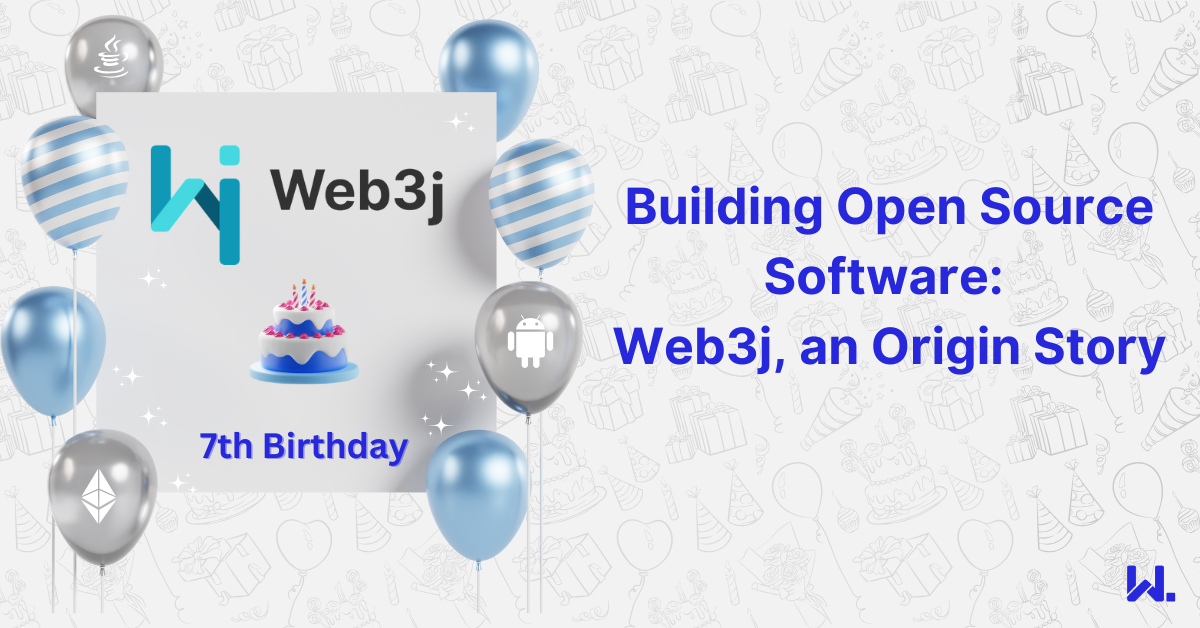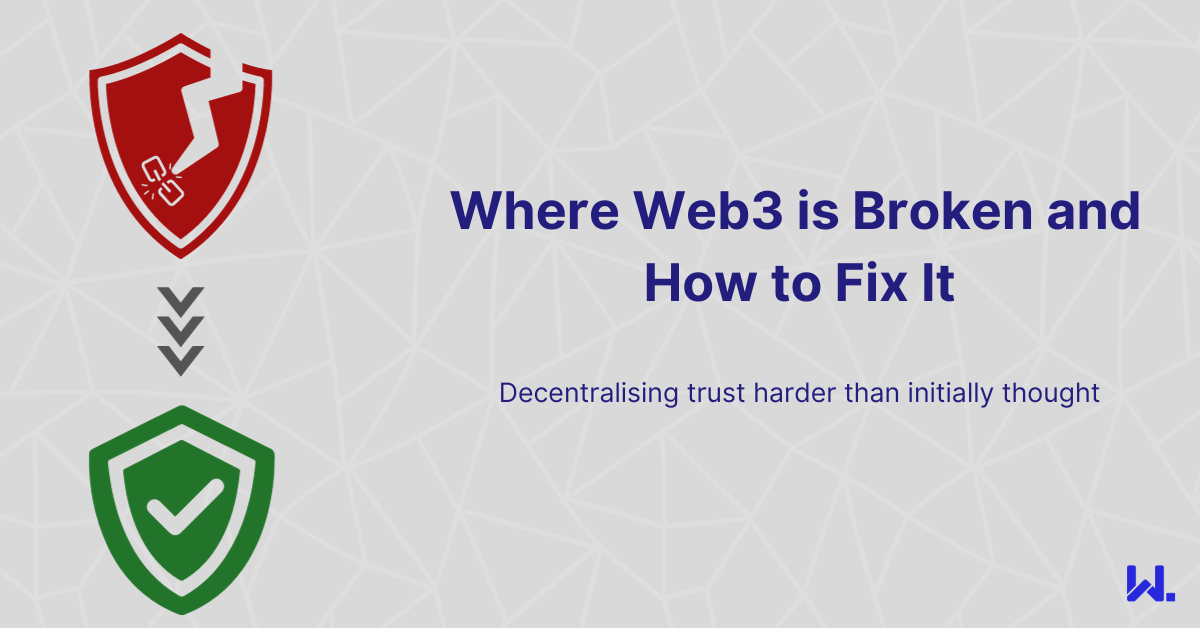Why Hyperledger Besu is the Future of Blockchain in Enterprise
The web3 landscape is continuing to evolve, especially with respect to the choices being presented to enterprises for blockchain initiatives. Historically when it came to choosing a blockchain network, enterprises had to decide between public or private networks. Now they also have the option of layer 2 networks and creating appchains which further complicates the decision-making process.
However, even against this complex landscape, whenever I am asked which platform is the one that will offer the most future-proof technology for them to build upon, the answer is simple — Ethereum, using the Hyperledger Besu client.
My reasoning follows.
The Ethereum Virtual Machine
Ethereum and its execution environment, the Ethereum Virtual Machine (EVM) is the TCP/IP of web3. It is a common standard for executing programs on decentralised blockchain networks running on the internet.
All major blockchain networks have made an effort to be EVM compatible because the lion’s share of developer activity on blockchain networks is via the Solidity programming language created 9 years ago. Smart contracts written in Solidity powered the initial coin offering (ICO) craze in 2018, the DeFi summer of 2020, the NFT mania of 2021 and continue to underpin the vast majority of blockchain applications.
Using a platform that is EVM compatible enables you to tap into the ecosystem with the widest amount of tooling, which lowers the time to market to launch products.
However, choosing to work with the EVM is only part of the story. Once you have decided to explore this route, you still need to understand how best to work with Ethereum. This will involve running Ethereum node or client software.
The node will be used to either bootstrap a private Ethereum network or operate as a node on the public Ethereum network.
Public or private or other?
Originally most enterprises were interested only in private blockchain networks that they could control either themselves or via a consortia. Today the story is different. Public blockchain networks have a proven technology track record and with their global reach, organisations are starting to utilise them to reach a wider number of customers than they could historically with their products and services.
For example, brands such as Nike and DC Comics have created NFTs to engage with their customers. Also, financial brands such as Paypal have launched stablecoins to bring fiat currencies on-chain. This trend is only going to accelerate in the coming years.
You also have a landscape of layer two blockchains and application-specific blockchains (appchains) being launched which are also applicable to enterprises. Appchains enable companies to launch a public or private blockchain that is secured by the public Ethereum network.
This securing via the public Ethereum network is achieved by rolling up batches of transactions, or proofs of transactions together and storing them on Ethereum. Once stored on Ethereum, they cannot subsequently be altered due to the immutability guarantees of the network.
This enables appchains to avoid the typical challenges associated with securing public blockchain networks which typically require a cryptocurrency to incentivise participants to act in an honest manner.
The result of this is that when organisations decide to work with blockchain technology, they need to choose a technology stack that not only meets the needs of enterprise, but also provides the deployment flexibility to work in multiple network configurations — public and private, and potentially with appchains.
This is where Hyperledger Besu comes in.
Hyperledger Besu
Hyperledger Besu is the only Ethereum client that was designed for enterprise at the outset. Prior to the emergence of Hyperledger Besu, when companies wanted to work with Ethereum technology, they would provision one of the public Ethereum clients such as the Ethereum Foundation's Geth.
This was suboptimal for companies on a number of fronts:
- It is licensed using the GPLv3 license which is a less permissive license.
- The only way of influencing the project’s development is by creating issues and submitting pull requests directly to the project developers.
- There are no support services available from vendors for the software.
- Modifying it to support private blockchain deployments requires hacks to the codebase which have no chance of being incorporated into the main codebase. This makes it very expensive to maintain.
This combination of challenges meant that it was non-trivial for organisations to work with Ethereum technology until Hyperledger Besu was created.
Hyperledger Besu was first launched in March 2019 under the name Pantheon. It became a Hyperledger Foundation project a few months later and was rebranded Hyperledger Besu.
Hyperledger Besu is the only Ethereum client that was designed to support both permissioned and public blockchain networks.
What this means is that you can run Hyperledger Besu as an execution client on the public Ethereum network. You can use this node for transacting with the network, deploying and interacting with smart contracts.
You can also create your own public or private permissioned blockchain network using Hyperledger Besu. This means you can create your own independent blockchain network, should this be more appropriate for your use case.
It's important to emphasise that Hyperledger Besu supports both deployment options equally — it is not primarily intended for a public or permissioned network deployment.
The association with Hyperledger is also important for Besu. The Hyperledger Foundation is an open-source, global ecosystem for enterprise-grade blockchain technologies. It provides a neutral, open community supported by technical and business governance.
What this means practically is that anyone can contribute to Hyperledger Besu — you don't need to be a member of the foundation. However, the project is governed by the Hyperledger Foundation, which ensures that the needs of its members (enterprises large and small) are being met via its governance process.
This governance is vital, as enterprise software has different requirements for open-source projects. A lot of web3 has been built thus far via open-source projects which were not designed with the needs of enterprise in mind.
This isn't an issue per se, these open-source projects secure hundreds of billions of dollars of digital assets and underpin public blockchain networks.
However, when things go wrong, an enterprise doesn't want to have to deal with a community, it needs other businesses it can interface with whose primary focus is to provide services to them.
They need support service level agreement, the ability to contribute to roadmaps, regular release cadence, and permissive licenses. Most importantly of all, they need projects to have a lifetime that will outlive their creators.
Having a neutral entity in the mix, such as Hyperledger helps ensure projects meet those guarantees.
This is why for enterprises, utilising Ethereum's Virtual Machine with Hyperledger Besu is the most enterprise-friendly way forward.
What About Layer 2 Networks and Appchains?
In the future, the landscape of layer 2 technologies and appchains will mature, and they will become clear winners in this space. However, at the current time, there are a large number of competing layer 2 and appchain providers competing with each other for market share. The market they are focusing on is public blockchain networks with open-source technologies.
They are not established offerings for enterprise. However, most of them have adapted Ethereum client technology for their networks. What this means practically is that it's likely Hyperledger Besu will be adapted to support certain flavours of layer 2 networks or appchains.
Given that its modular architecture supports public and private networks, these types of extensions can be added without too significant an overhead. This will ensure that Hyperledger Besu will continue to thrive supporting enterprises building with Ethereum technology.
The evolutionary nature of blockchain technology can create challenges for enterprises when it comes to choosing a platform to focus on. Hyperledger Besu is the only Ethereum-compatible client which was designed to service both the needs of enterprise and public blockchain networks.
Enterprises are well served by it due to:
- It's the only Ethereum client which was developed for enterprise.
- It is governed by the Hyperledger Foundation which provides both technical and business governance.
- Not being reliant on a single company or person for its long-term survival.
- Permissive licensing via its Apache 2.0 license.
- Its modular architecture allows you to use it for both public and permissioned blockchain networks.
- It's ability to evolve to support layer 2 networks.
The future is uncertain, but Hyperledger Besu helps reduce many of the challenges organisations face when working with technology, which is an achievement that should not be underestimated.






